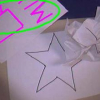Free Online Productivity Tools
i2Speak
i2Symbol
i2OCR
iTex2Img
iWeb2Print
iWeb2Shot
i2Type
iPdf2Split
iPdf2Merge
i2Bopomofo
i2Arabic
i2Style
i2Image
i2PDF
iLatex2Rtf
Sci2ools
74
Voted
ICPR
2008
IEEE
2008
IEEE
Object localization using affine invariant substructure constraints
In this paper we propose a novel method for generic object localization. The method is based on modeling the object as a graph at two levels: a local substructural representation and a global object graph. In the first level, an object substructure is a quasi affine-invariant canonical encoding of a set of four straight contour lines of the object. The second level is a connectivity graph of these substructures that defines the object. The candidate substructures in an observed image are selected probabilistically using the model distribution. To extract the object graph from these candidates, we exploit the strong inter-structural affinities within the object. We consider the connected graph of all candidates and find a bi-partition of this graph. Finally, the partition with higher density (and hence with higher affinity) is selected and labeled as the object structure. This method is independent of affine transformations of objects and robust to intra-class variability and partial o...
Computer Vision | Generic Object Localization | Global Object Graph | ICPR 2008 | Object Substructure |
Related Content
| Added | 05 Nov 2009 |
| Updated | 06 Nov 2009 |
| Type | Conference |
| Year | 2008 |
| Where | ICPR |
| Authors | Ahmed M. Elgammal, Ishani Chakraborty |
Comments (0)

